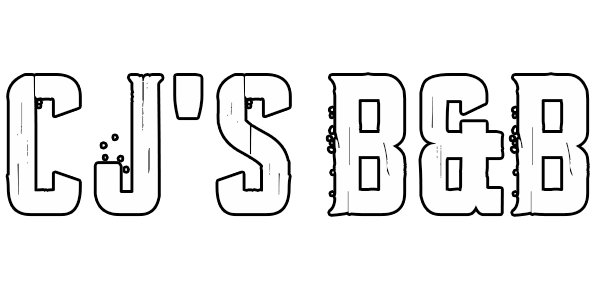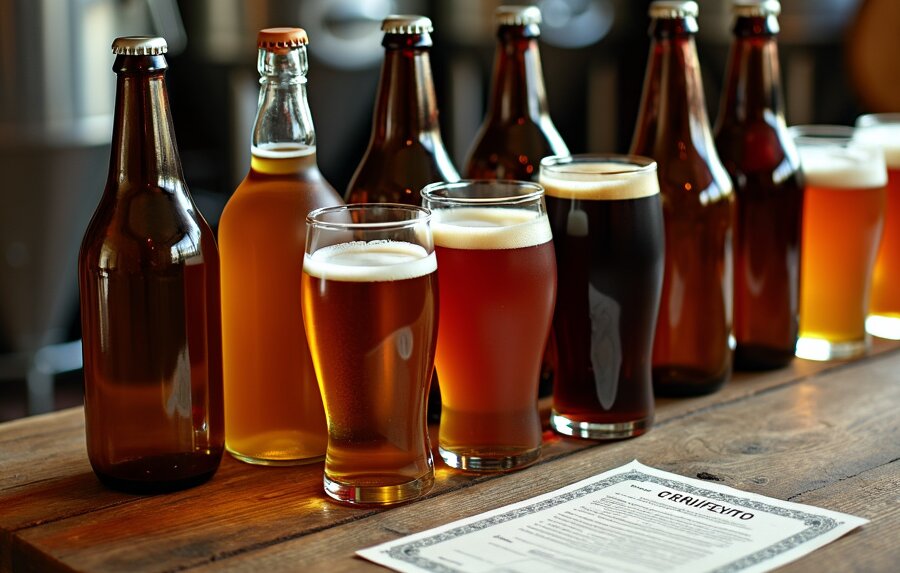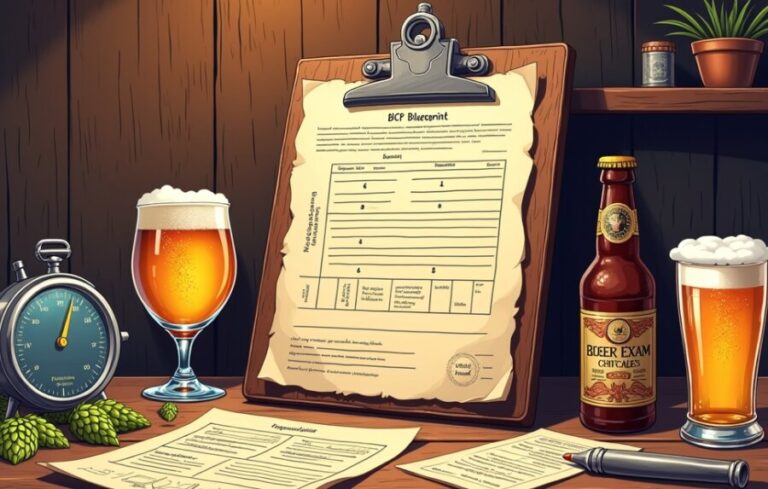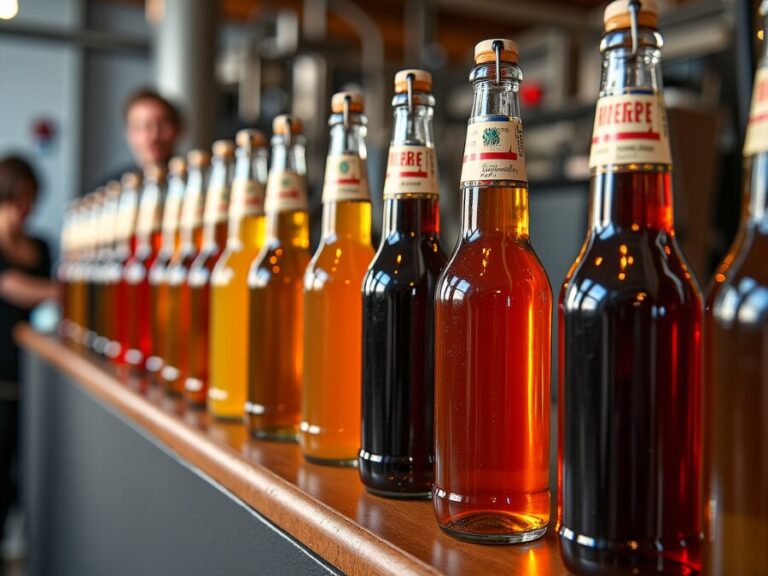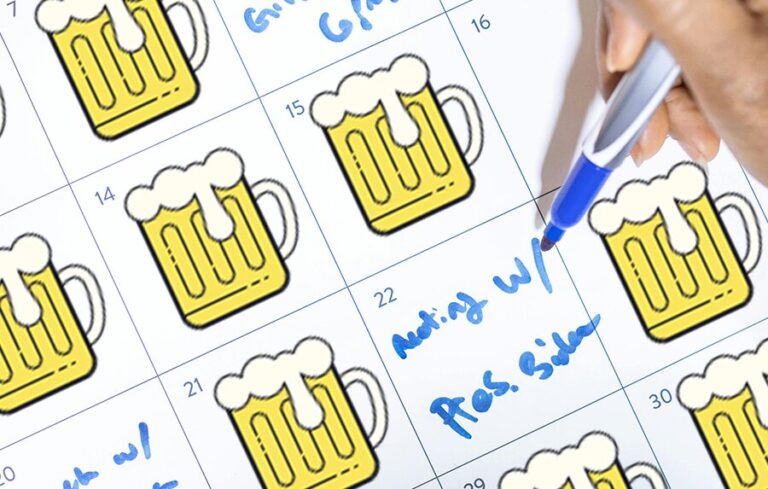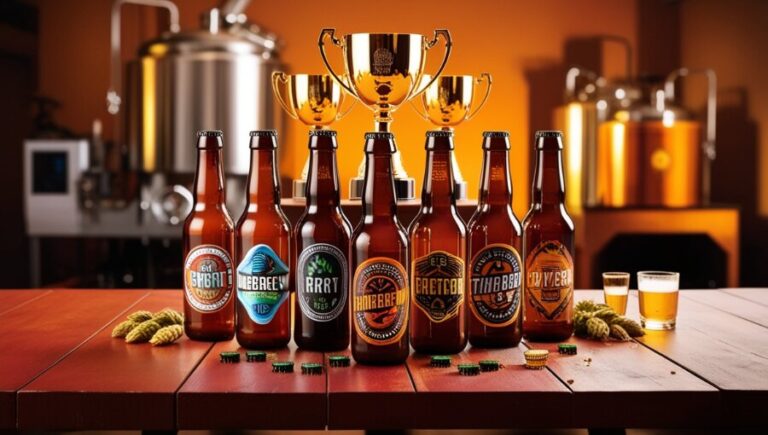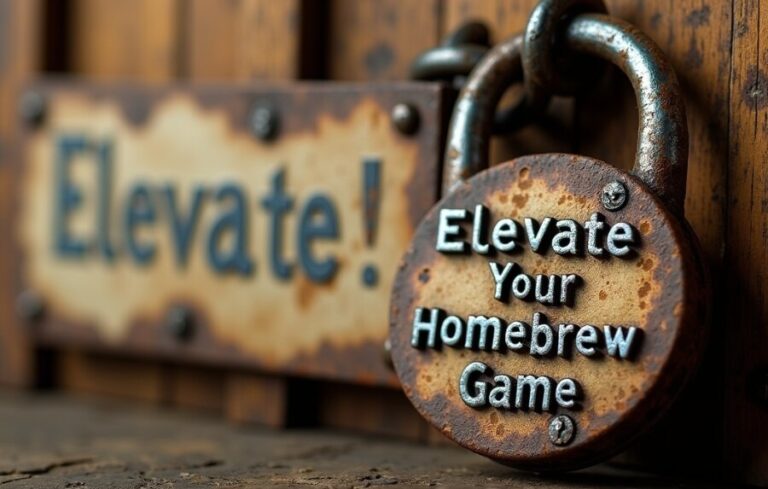Our evaluations and product assessments are conducted using a thorough and unbiased approach. Should you choose to buy any items through our provided links, we might receive a commission Read our disclosures.
Homebrew Competition Registration Basics
Jumping into a homebrew competition is a thrilling way to showcase your brews and mingle with other beer lovers. Before you dive in, let’s break down the essentials of signing up and the key players who make these events happen.
Start by finding a competition that suits your brew. Check out local homebrew clubs or national events like the National Homebrew Competition. Once you’ve picked your competition, it’s time to register. Most competitions have an online registration system. You’ll need to create an account and fill in details about your brew, such as the style and any special ingredients.
Next, prepare your entries. Competitions typically require two to three bottles per entry. Make sure your bottles are clean and properly labeled according to the competition’s guidelines. Labels should be free of any identifying marks to ensure unbiased judging.
Shipping your entries is the next step. Pack your bottles securely to prevent breakage. Many competitions have specific shipping windows, so be sure to send your entries on time.
Getting Registered
Now you gotta register. This usually means submitting your entries and paying a fee. For example, back in 2011, the National Homebrewing Competition charged $9 for American Homebrewers Association (AHA) members and $14 for non-members (Homebrewers Association Forum). Keep an eye on those homebrew competition deadlines so you don’t miss out.
Competitions often have entry limits. In 2011, the National Homebrewing Competition capped entries at 750 (Homebrewers Association Forum). So, if you’re serious about competing, register early. Many events use homebrew competition software to make the whole process smoother.
| Registration Fee | AHA Members | Non-Members |
|---|---|---|
| National Homebrewing Competition (2011) | $9 | $14 |
| National Homebrewing Competition (2024) | $29 | $29 |
Who’s Who in Homebrew Competitions
A well-run homebrew competition needs a solid team. Here’s a quick rundown of the key roles:
| Position | Responsibilities |
|---|---|
| Event Coordinator | Runs the show from start to finish, making sure everything goes off without a hitch. |
| Judge Coordinator | Finds and manages judges, ensuring they know their stuff. |
| Sponsorship Coordinator | Ropes in sponsors and keeps them happy. |
| Data Entry Personnel | Keeps track of all the entries and organizes the info. |
| Cellar Staff | Takes care of storing the entries at the right temperature. |
| Head Steward | Helps judges during the evaluations and keeps things moving smoothly. |
These folks are the backbone of any competition, handling everything from registration to organizing entries (American Homebrewers Association). Whether you’re thinking of hosting or just want to compete, knowing what goes on behind the scenes can give you a new appreciation for the effort involved.
For more tips on rocking your next competition, check out our article on homebrew competition tips.
Judging in Homebrew Competitions
Jumping into homebrew competitions? The judging process is where the magic happens. Whether you’re entering your brew or thinking about becoming a judge, understanding how it works is key.
What’s the Deal with BJCP Certified Judges?
Judges are the backbone of any homebrew competition. Ideally, they should be BJCP (Beer Judge Certification Program) certified. But hey, experienced folks like professional brewers or those with formal sensory training can also join the fun. Usually, each beer gets the once-over from at least two judges to keep things fair and square (American Homebrewers Association).
How Do Judges Evaluate Your Brew?
Judges break down each beer into five main categories:
| Evaluation Criteria | What It Means |
|---|---|
| Aroma | The smell of the beer, including hops, malt, and any extras. |
| Appearance | How the beer looks—color, clarity, and head retention. |
| Flavour | The taste, balancing sweetness and bitterness. |
| Mouthfeel | The beer’s texture, including carbonation and body. |
| Overall Impression | The judge’s overall take, considering style guidelines. |
These categories help judges figure out the quality of your homebrew. Some competitions even have up to four judges per flight, giving you a mix of opinions and feedback (American Homebrewers Association).
If you’re thinking about entering, knowing these criteria can help you brew a winner. Want more tips? Check out our homebrew competition tips or keep an eye on the homebrew competition calendar.
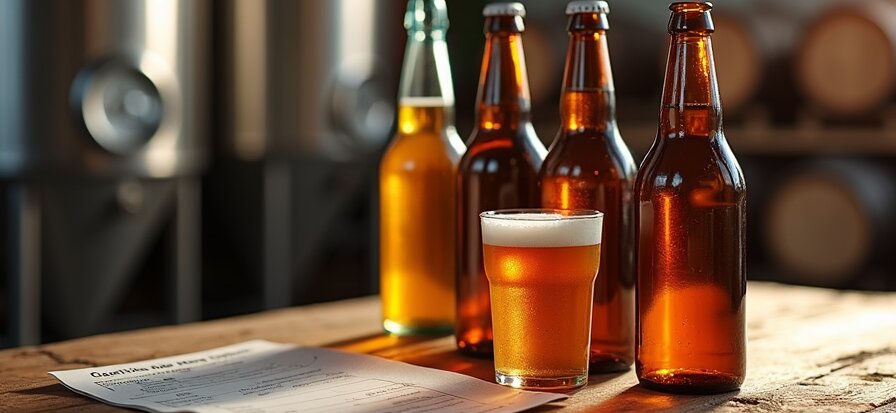
Throwing a Homebrew Bash
Throwing a homebrew bash is a fantastic way to connect with fellow beer lovers and show off your brewing chops. From picking the perfect spot to setting up a killer website, here’s how to make your event a hit.
Picking the Perfect Spot
Where you hold your bash can make or break the vibe. Breweries are a top pick because they have everything you need: lots of space, cold storage for your brews, and food to keep everyone happy. Plus, brewery owners often get the homebrew scene since many started as homebrewers themselves (American Homebrewers Association).
If a brewery isn’t an option, think about homebrew stores or even someone’s house. Here’s a quick look at your options:
| Venue Type | Perks |
|---|---|
| Breweries | Lots of room, cold storage, food |
| Homebrew Stores | Community feel, knowledgeable staff |
| Private Homes | Cozy, personal touch |
Why You Need a Website
A dedicated website is a must for smooth sailing. It’s the go-to spot for everyone involved—entrants, judges, and volunteers. Whether it’s a standalone site or a page on your club’s site, it needs to be clear and easy to use (American Homebrewers Association).
Here’s what your site should have:
- Sign-Up Forms: For everyone from brewers to judges.
- Event Info: Where and when it’s all going down.
- Rules and Categories: What folks need to know to enter (homebrew competition rules).
- Contact Details: For any questions or help.
- Updates: Keep everyone in the loop with the latest news.
Putting some effort into your website will make things clear and keep everyone on the same page. For more tips on organizing your bash, check out our homebrew competition tips.
Sponsorship in Homebrew Competitions
Sponsorship is the secret sauce that makes homebrew competitions a hit. It’s not just about the money—it’s about creating a fun, memorable experience for everyone involved. Trust me, I’ve seen how a good sponsor can turn a simple event into a community celebration.
Why Sponsors Matter
Sponsors are the backbone of homebrew competitions. They chip in with prizes, gift cards, and other goodies. These sponsors can be anyone from your local homebrew store to big-name breweries. In return, they get their name out there on the competition website, reaching a whole new crowd. This give-and-take builds a tight-knit community and gets local businesses excited about homebrewing.
| Sponsor Type | What They Give | What They Get |
|---|---|---|
| Homebrew Stores | Prizes, gift cards | Shout-outs on the competition website |
| Breweries | Hosting the event, beer donations | More fans among homebrew lovers |
| Local Shops | Gift baskets, vouchers | Good vibes and brand love |
Holding the event at a brewery? That’s a win-win. Just remember to tip the servers well—they’re part of making the day awesome.
Why Sponsorship Rocks
Sponsorship isn’t just about the cash. It’s about getting noticed in the homebrew world, building customer loyalty, and making connections. People are more likely to support businesses that support their hobbies.
Here’s what sponsors get out of it:
- Brand Love: Their name pops up on event flyers, websites, and social media.
- Community Ties: Supporting local events makes them a community favorite.
- Networking: They get to meet homebrewers and industry pros, opening doors for future projects.
If you’re thinking about running or joining a homebrew competition, knowing how sponsors fit in is key. Want more tips? Check out our guides on homebrew competition rules and homebrew competition tips.
National Homebrew Competition Guide
2024 Competition Details
Hey there, homebrew enthusiasts! Ready to dive into the 2024 National Homebrew Competition? This year, we’re back to regional first-round competitions across nine different spots. Each location will pick the best beers to move on to the Final Round in sunny San Diego. Heads up, the entry fee is $29 per submission, and you gotta pay it within the registration window, or you’re out. When you register, you can choose your First Round judging site, but it’s first-come, first-served, so don’t snooze!
Here’s the lowdown on what you need to know:
| What You Need | Details |
|---|---|
| Entry Fee | $29 per entry |
| First Round | Send two bottles to your chosen site |
| Final Round | Send three bottles to San Diego |
| Style Guidelines | 2021 BJCP Style Guidelines |
For more info, check out the homebrew competition calendar.
Mead and Cider Categories Expansion
Exciting news for all you mead and cider lovers! The 2024 competition is expanding these categories. Mead categories are jumping from 5 to 13, and cider categories from 2 to 4. This means more chances to show off your unique brews and celebrate the wide range of flavours and styles in these drinks.
The competition is keeping its fun vibe while recognizing the growing love for mead and cider in the homebrewing world. I can’t wait to see the creativity and innovation this change will spark. If you’re planning to enter, make sure to check out the homebrew competition categories to align your entries with the new guidelines.
For those curious about feedback, during the first round, all entrants will get electronic BJCP-structured judge score sheets for their entries, available within two weeks after judging wraps up. Beers that make it to the final round will also get electronic judge feedback cards, offering valuable insights to help you improve your future brews.
Need some tips to ace the competition? Check out homebrew competition tips for some handy guidance.
Tips for Organizing a Homebrew Competition
Putting together a homebrew competition can be a blast. As I gear up for my next event, I always remember the importance of a solid timeline and clear rules.
Competition Timeline
A clear timeline is your best friend for keeping things on track. Here’s a typical breakdown for organizing a homebrew competition:
| Time Frame | Tasks |
|---|---|
| 3-4 months before | Start planning, set dates, and book venues |
| 1-2 months before | Finalize details, promote registration |
| 1 week before | Last-minute prep, confirm judges |
| Day of competition | Run the event, manage logistics |
| 1 week after | Wrap-up activities, gather feedback |
Sticking to this timeline helps me stay organized and ensures nothing slips through the cracks. Plus, I always make sure to complete my homebrew competition registration at least 90 days before the event. This gives enough time for proper promotion in the AHA and BJCP calendars, and in Zymurgy magazine (BJCP).
Setting Competition Rules
Clear rules are a must for a smooth competition. As the organizer, I get to set the rules, which might include:
- Picking the best beers in split categories
- Deciding on a two- or three-bottle competition
- Allowing walk-in entries for judges
- Setting minimum scores for awards
- Establishing awards for category winners and Best-of-Show
For more detailed guidelines, I refer to the homebrew competition rules provided by the BJCP (BJCP).
I also make sure to have enough judges. Generally, I aim for at least two judges per flight, with flights containing 6 to 12 entries. To figure out how many judges I need, I use this formula:
Judges Needed = ((E/L) x P)/S
Where:
- E = number of entries
- L = average entries per flight
- P = desired number of judges per panel
- S = number of sessions
This structured approach helps me focus on creating a fun experience for everyone. If you want more tips, check out our homebrew competition tips to help with your planning.

